“Ok nú er þat fram komit, er fyrir löngu var spát ok vér höfum dulizt við, en engi má við sköpum vinna”
De Völsunga Saga is opgeschreven in de dertiende eeuw door een onbekende IJslandse auteur. Hoewel het een middeleeuws manuscript is, dateert een groot deel van het materiaal uit de vroege vierde of vijfde eeuw. In wezen is de Völsungensage een verhaal dat uit de Germaanse orale verteltraditie is gegroeid, met het Duitse Nibelungenlied als de bekendste variant. Richard Wagner, die de Nibelungensage omzette naar een opera, vertelde maar een fractie van de sage en dan nog in een zeer vrije versie. Het verhaal dat hieronder verteld wordt, is de IJslandse, en dus de meest volledige, versie. Deze sage bevat staat bol met mythologische en historische verwijzingen. Zo is ‘Atli’ niemand minder dan Atilla de Hun. Let vooral op de subtiele parallellen met andere mythes uit Europa, zoals de wispelturigheid van de goden wanneer ze tussenkomen in de wereldlijke affaires van het Völsungengeslacht. Dit is een vrije vertaalde versie, gebaseerd op het verhaal zoals opgetekend in het cd-boekje van ‘The Völsunga Saga’ (2006) van de Vlaamse muziekgroep Theudho.
Sigi was vermoedelijk de sterfelijke zoon van Odin, de machtigste der Goden. Op een dag ging hij jagen, vergezeld door een slaaf genaamd Bredi. Deze slaagde erin een betere partij te leveren dan Sigi en hij confronteerde de zoon van Odin met deze feiten. Sigi was woedend door zulke arrogantie, dat hij Bredi ter plekke doodsloeg. Hij trachtte diens lichaam te verbergen onder een hoop sneeuw, maar al snel genoeg werd Bredi’s lichaam ontdekt door andere dorpelingen. Als een gevolg hiervan werd Sigi verbannen van zijn dorp en werd hij ‘Varg í veum’ genoemd, ‘Wolf in het heiligdom’. Odin leidde Sigi naar verafgelegen landen waar hij een leger oprichtte en door talloze militaire campagnes veel geld en macht verwierf. Hij trouwde en kreeg een zoon die Rerir noemde.
Sigi veroverde het land van de Hunnen, maar werd op een verraderlijke manier vermoord door zijn schoonbroers. Zijn zoon Rerir zwoer op die dag wraak en zou niet rusten vooraleer hij de moordenaars van zijn vader zou straffen. Hij eiste de bezittingen van zijn vader op en sloeg er zelfs in diens weelde en macht te overtreffen. Naast het vele plunderen vond Rerir het geluk in de liefde en trouwde met een vrouw waarvan hij erg hield. Helaas bleef hun huwelijk kinderloos. Omdat de troon geen erfgenaam had, baden Rerir en zijn vrouw tot de Asen om een zoon. De Godin Frigga hoorde hun noodlottige aanroeping en, met Odins’ toestemming, zond zij de Walküre Ljod, dochter van de reus Hrimnir, naar Rerir. Zij droeg een betoverde appel met zich mee dat de felbegeerde wens van Rerir en zijn vrouw zou vervullen. De vrouw van Rerir geraakte vlug zwanger, maar het kind leek niet geboren te willen worden waardoor haar gezondheid fel achteruit ging. Omdat ze voelde dat ze vlug zou sterven eiste zij dat het kind uit haar lichaam gesneden zou worden en zo gebeurde het … Wanneer het kind eindelijk geboren was, was hij reeds groot en kuste zijn stervende moeder vaarwel. Het kind heette Völsung. Hoewel hij slechts een kind was toen zijn ouders stierven, heerste hij over het land van de Hunnen. Hij trouwde met de Walküre Ljod, waarmee hij tien sterke zonen en een prachtige dochter, genaamd Signy, kreeg. Völsung bouwde een adellijke hal rondom een monumentale eik, genaamd Branstock.
Siggeir, de koning van de Goten, vroeg permissie om de hand van Signy om ermee te trouwen. Völsung stemde toe, hoewel Signy niet tevreden was met het huwelijk. Tijdens het huwelijksfeest werd de toegang van de hal verduisterd door een grote, eenogige man in een hemelsblauwe mantel. Dit was niemand minder dan Odin. Zonder de aanwezige gezellen te begroeten wandelde hij zonder enige aarzeling richting de eik Branstock, trok zijn zwaard en stak hij het tot het gevest van het zwaard in de boomstam. Niemand kon het zwaard uit de boomstam halen tot Sigmund, Signy’s broer zijn krachten bundelde. Hij trok het zwaard uit de boomstam, wat het hart van Siggeir smartelijk vulde met nijd. Hij bood Sigmund aan het zwaard over te kopen, maar Sigmund weigerde. Dit beledigde Siggeir zo hard dat hij zwoer de Völsungen uit te roeien. Hij nodigde hen uit op zijn hof en lokte hen in een hinderlaag. Sigmund werd gedwongen het zwaard op te geven aan Siggeir, die de Völsungen veroordeelde tot een gruwelijke dood. Zij werden geketend aan een gevallen eik in het woud, zodat zij zouden sterven aan honger en dorst – tenminste, als het wilde beest dat in de wouden rondzwierf hen niet zou opeten. Elke nacht kwam het beest een van Sigmunds’ broers opeten. Een voor een werden ze opgegeten door het beest, een wrede wolf, totdat enkel Sigmund overbleef. Heimelijk smeerde Signy honing op het gezicht van haar broer en in zijn mond. Dit zorgde ervoor dat de wolf Sigmunds’ gezicht likte in plaats van te bijten. Wanneer de wolf in Sigmunds’ mond trachtte te likken beet Sigmund diens tong eraf met zijn tanden, waardoor het beest jankend wegliep. Zo sloeg Sigmund erin te ontsnappen en leefde verborgen in het woud. Samen met zijn zus Signy zwoer hij Siggeir te doden.
Omdat Signy realiseerde dat enkel een volbloed Völsung hen zou helpen in hun wraak, vermomde zij zich in een heks. Zo spendeerde zij een nacht met haar broer, die dit niet wist en baarde een incestueuze zoon, Sinfjötli. Jaren later sloeg Siggeir erin Sigmund en Sinfjötli gevangen te nemen. De wrede Goot beval dat ze levend begraven zouden worden in een aardheuvel. Om hun lijden te verlengen, liet Siggeir Signy toe haar verwanten wat voedselvoorraden mee te geven. In plaats van voedsel, gaf ze hen het onbreekbare zwaard van Odin aan hen, waarmee ze ontsnapten. Om hun uiteindelijke wraak uit te voeren, staken Sinfjötli en Sigmund de hal van Siggeir in brand. Toen Siggeir en de Goten stierven in de brand werden de Völsungen eindelijk gewroken. Sigmund keerde terug naar zijn thuisland en eiste de troon opnieuw op waarop hij trouwde met Borghild. Zij was jaloers op Sigmunds’ zoon Sinfjötli en vergiftigde hem. Sigmund moest zijn eigen zoon naar het woud brengen waar hij een man ontmoette die het lichaam van Sinfjötli aan de andere kant van de fjord zou brengen. Wanneer de boot het midden van de fjord bereikte verdween deze. De schipper bleek niemand anders te zijn dan Odin, die Sinfjötli naar Walhalla bracht …
Als een straf voor haar misdaad verliet Sigmund Borghild en maakte een vrouw genaamd Hjordis tot koningin. Koning Lyngvi, die ook om Hjordis’ hand vroeg, werd zo woest dat hij een leger oprichtte en ten strijde trok tegen Sigmund. Hoewel Lyngvi’s leger superieur was, stapelden de doden rond Sigmund zich in ijltempo op. Niemand bleek op te kunnen tegen Sigmund, tot een eenogige krijger arriveerde die met een krachtige zwaai het zwaard van Sigmund vernielde. De held kon zich zelf niet verdedigen en viel neer door zijn fatale verwondingen. De stervende Sigmund beval Hjordis om de stukken van zijn gebroken zwaard te verzamelen en hen te geven aan hun ongeboren zoon. Op een dag zou het zwaard opnieuw gesmeed worden en de naam Gram krijgen. Enige tijd later gaf Hjordis geboorte aan de zoon van de gevallen Sigmund, die naar het hof van koning Hjalprek gezonden werd. Hij noemde deze zoon Sigurd en beval dat Regin de smid de taak als opvoeder zou opnemen. Geleid door Regin oefende Sigurd tot hij een bekwaam krijger werd, maar hij leerde ook de geheimen van de runen, vele talen, muziek en de kunst van welbespraaktheid. Toen Sigurd man werd vroeg hij aan Hjalprek om een paard. Hij reed naar de wouden en kwam een oude man tegen met een grijze lange baard. De oude man vertelde hem een bijzonder paard te kiezen, waarvan gezegd word dat deze een afstammeling van Sleipnir was, het achtbenige paard van Odin.
Sigurds’ opvoeder Regin hoopte dat Sigurd hem zou helpen in het verkrijgen van de schat van zijn broer. Hij vertelde Sigurd het verhaal van zijn broers Fafnir en Otter en zijn vader Hreidmar. Terwijl Regin een begenadigd smid was, was Otter een uitstekende visser. Overdag was hij in een otter veranderd en kon zo gigantische aantallen vis verzamelen die hij aan zijn vader leverde. Op een dag passeerden Odin, Haenir en Loki langs een waterval. Otter had een zalm gevangen en at de vis op met gesloten ogen op de rivieroever. Niet wetende dat otter een gedaanteverwisselaar was, nam Loki een steen en gooide hem dood. Toen Hreidmar zijn zoon dood zag beval hij dat de Asen gevangen zou genomen worden. In ruil voor weergeld zou hij deze terug vrijlaten. Loki kon genoeg goud inzamelen om de huid van Otter te vullen. Hij leende het net van de godin Ran om de dwerg Andvari te vangen, die vaak in de rivier rondzwierf in de vorm van een snoek. Loki ving hem in zijn netten en Andvari was verplicht al zijn geld op te geven, inclusief een gouden ring die hij verborgen wilde houden. Hij vervloekte de ring, zwerende dat eenieder die het goud in bezitting nam, zou sterven. Hreidmar verkreeg de schat en de goden werden vrijgelaten. De vloek van Andvari werd snel werkelijkheid toen Fafnir zijn vader vermoorde. Het goud maakte Fafnir wreed en trok terug in de wildernis met zijn schat en veranderde uiteindelijk in een gruwelijke draak. Dit is hoe Regin zijn rechtmatige erfenis verloor.
Sigurd ging in op de vraag van Regin om de schat te verkrijgen die Fafnir bewaakte. Een goed zwaard zou hem in deze queeste kunnen helpen. Met al zijn talent smeedde Regin een zwaard die Sigurd echter op een aambeeld stuk sloeg. Hij gooide de stukken terug naar Regin en eiste hem een nieuw zwaard te smeden. Maar het tweede zwaard die Regin smeedde ging eveneens kapot. De woedende Sigurd verweet Regin even onbetrouwbaar te zijn als zijn verwanten. Sigurd ging nu naar zijn moeder en vroeg haar of de verhalen van het gebroken zwaard juist waren. Zijn moeder beaamde wat hij geleerd werd en gaf hem de stukken van het zwaard, terwijl zij meegaf dat nog vele heroïsche daden werden verwacht van hem. De heldhaftige krijger bracht het gebroken zwaard naar Regin, die het zwaard Gram terug herstelde. Met een machte houw doorklief Sigurd het vervloekte aambeeld. Daarna nam Sigurd het zwaard mee naar een rivier, plaatste het rechtop in een rivier en gooide een stuk wol in de rivier. Wanneer de wol botste met het zwaard werd zij in tweeën gesneden. Met vreugde in zijn hart keerde Sigurd terug naar Regin die hem herinnerde trouw te zijn aan zijn eed om Fafnir te doden. Sigurd zwoer de draak de doden, maar trok er eerst op uit om zijn vader te wreken.
Sigurd verzamelde een massief leger en zeilde aan het hoofd van de grootste drakkar richting het land van Hundings’ zonen. Na enkele dagen zeilen brak er een gewelddadige storm uit waardoor de zee leek te bestaan uit bloed in plaats van water. Wanneer de vloot langs een uitstekende rots kwam begroette een man de schepen vroeg wie de leiding had. Hij werd verteld dat Sigurd Sigmundarson de leiding had. De man, die zichzelf voorstelde als Hnikar vroeg om mee te zeilen en toen hij aan boord ging stak de wind opeens fel op. De vloot bereikte het rijk van Hundings’ en Sigurds’ leger trok erop uit om te plunderen en het vuur en het zwaard te laten spreken. In angst vluchtten velen naar het hof van Lyngvi en waarschuwden hem voor Sigurd. Lyngvi trok met zijn leger op zoek naar Sigurd en het duurde niet lang voor zij elkaar tegenkwamen. Sigurd baande zijn weg door de vijandelijke troepen en zijn armen werden helemaal bedekt met het bloed van zijn vijanden. Dan ontmoette hij Lyngvi op het slagveld en met een machtige houw doorkliefde hij diens helm, hoofd en borstplaat waarna hij diens broer Hjörvard in tweeën hakte. Hij doodde de resterende zonen van Hunding en een groot deel van Lyngvi’s leger. Zwaar beladen met de plundergoederen keerde Sigurd terug naar huis. Hij rustte niet, want hij zou zijn eed aan Regin vervullen en hij trok erop uit om zichzelf met Fafnir te confronteren.
Regin en Sigurd reden naar het moeras waar zij een pad vonden waarlangs Fafnir vaak ging om te drinken van een nabijgelegen vijver. Regin beval Sigurd om een put te graven en te wachten op hem. Wanneer het serpent over het hol zou kruipen kon hij zijn hard doorboren. Nog voor de zon opging begon Sigurd aan het graven van deze put zoals gepland. Een oude man kwam langs en vroeg wat hij aan het doen was. Hij vond het idee vreselijk en raadde Sigurd aan om meer putten te graven om het bloed te verzamelen. Sigurd volgde zijn wijze raad en groef meer putten. Hij verstopte zichzelf in een van hem, bedekte zichzelf met zijn mantel en wachtte tot de draak over de put kwam gekropen. Kort na de dageraad verscheen Fafnir uit zijn schuilplaats om zijn dorst te lessen. Wanneer de draak langs de put kwam stak Sigurd zijn zwaard diep in de buik van Fafnir. Nu beval Regin dat Sigurd het hart van Fafnir zou braden als weergeld voor de dood van zijn broer. Veronderstellende dat het vlees zacht was, raakte Sigurd dit hart aan met zijn wijsvinger. Onwetende dat het hart reeds warm was, verbrandde hij zijn vinger en stopte het instinctievelijk in zijn mond om de pijn de verzachten. Zo proefde Sigurd het bloed van Fafnir. Nu verstond Sigurd de taal van de vogels, die vanuit een nabije boom vertelden over Regin’s nakende verraad en over de slapende Walküre Brynhild. Vooraleer hij op pad ging om de Walküre te zoeken, onthoofde Sigurd Regin en nam bezit van de schatten van Fafnir: de vervloekte ring Andvaranaut, het zwaard Hrotti, de helm van Afgunst en de Gouden Byrnie.
Gestraft door Odin voor haar ongehoorzaamheid, lag Brynhild te slapen in een ring van vuur totdat een sterfelijke man moedig genoeg was om deze te doorbreken. Sigurd reed van Hindfell naar het zuiden naar het land van de Franken toen hij een kasteel tegenkwam dat zich in het midden van vlammen bevond die richting de hemelen reikten. Hij sloeg erin de ring van vuur te doorbreken om Brynhild te bereiken en maakte haar wakker. Sigurd kon zich niet beschikbaar stellen en zwoer terug te keren. Hij plaatste de ring Andvaranaut rond haar vinger en zwoer om alleen van haar te houden. In het verloop van de daaropvolgende rondzwervingen kwam Sigurd in het land van de Niflungen, waar een permanente mist heerste. Koning Giuki en zijn koningin hadden drie zonen: Gunnar, Högni en Guttorum, en een dochter die Gudrun heette. Gudrun werd verliefd op Sigurd en liet hem een liefdesdrank drinken die hem zijn eed aan Brynhild deed vergeten. Hierna vroeg hij om Gudruns’ hand aan Giuki en trouwden ze. Snel daarna stierf Giuki en zijn oudste zoon Gunnar volgde hem op. Grimhild raadde hem aan een vrouw tot zich te nemen en suggereerde dat Brynhild waardig zou zijn. Dit gebeurde met de steun van Sigurd. Het was immers dankzij magie dat Sigurd en Gunnar van gedaante verwisselden zodat Sigurd als Gunnar door de vuurring kon gaan om Brynhilde (nogmaals) te verleiden. De escalerende jaloezie tussen Gudrun en Brynhild leidde echter tot een vroege dood van Sigurd door de handen van Guttom, op vraag van Gunnar. Overmand door verdriet naast het brandende grafvuur van Sigurd doodde Brynhild zichzelf en werd ze naast Sigurd geplaatst, een man van wie ze altijd is blijven houden.
Gudrun kon niet getroost worden na de dood van Sigurd. Samen met haar dochter vluchtte ze naar het hof van koning Alf en koningin Thora in Denemarken waar ze de rust vond waarnaar ze op zoek was. Die rust zou echter niet lang duren aangezien Atli, de koning van de Hunnen, naar het hof van Gunnar reisde om Gudruns’ hand te vragen. Omdat Gunnar vreesde dat een weigering zou resulteren in een invasie van zijn land door de Hunnen ging hij akkoord en reisde hij met een groot gevolg naar Denemarken om Gudrun te overtuigen. In eerste plaats kon zij niet overtuigd worden, maar het is haar moeder Grimhild met een betoverde drank dat Gudrun haar verdriet om Sigurd vergat dat zij toegaf aan de eis van Atli. Na het huwelijk keerden de herinneringen echter langzaam terug, ondanks het feit dat ze twee zonen baarde aan Atli. Atli leerde dat de schat van Sigurd aan Gudrun toebehoort en eiste aan Gunnar dat hij deze zou overdragen. Daarom nodigde hij Gunnar en zijn broer Högni uit op een feest in het land van de Hunnen. Gudrun wist wat Atli van plan was en trachtte haar broers te waarschuwen door een bericht in runen te sturen naar haar broers. Maar Vingi, de boodschapper van Atli, kon runenschrift lezen en veranderde de letters zodat de broers werden aangemaand snel te komen naar het hof van Atli. Maar Gunnar en Högni waren met reden achterdochtig. Zij dumpten de schatten van Sigurd in de Rijn en bezwoeren een eed om de locatie nooit te onthullen.
Toen de broers aankwamen overviel Atli de twee broers. Toen Gudrun haar verwanten in het gedrang zag nam zij een zwaard en vocht kloekmoedig aan de zijde van haar broers. Ondanks hun moed werden beide broers gevangen genomen. Geen van hen zou de locatie van de schat onthullen, maar bedreigd met martelingen zei Gunnar aan Atli dat hij wou toegeven, op voorwaarde dat Atli het hart van Högni zou uitsnijden zodat hij nooit zou weten dat zijn broer de eed had verbroken. Nu Högni dood was, was Gunnar de enige die het geheim wist. Toen hij realiseerde dat hij in de val was gelopen werd Gunnar vastgeknoopt en in een put vol slangen gegooid. Hij kon het onvermijdelijke vertragen door de slangen te sussen door harp te spelen met zijn tenen. Alle slangen waren daardoor betoverd, behalve een die Gunnar beet en zijn dood veroorzaakte. Dorstend naar wraak organiseerde Gudrun een begrafenisfeest ter ere van haar broers die stierven in de slachting aan het hof van Atli. Terwijl de feesten aan de gang waren doodde Gudrun de twee zonen die zij aan Atli gebaard had. Ze mengde hun bloed met de wijn en diende hun geroosterde harten op aan Atli en zijn gasten. Uiteindelijk vroeg Atli haar waar zijn zoons waren. Zij vertelde de grimmige waarheid en stak hem dood. Terwijl hij stierf moest Atli horen hoe zijn vrouw hem vertelde dat zij altijd van Sigurd was blijven houden. Ze stak de hal van Atli in brand en daarmee de rest van Atli’s gasten die te dronken waren om te vluchten.
Na deze tragische gebeurtenissen wilde Gudrun een einde maken aan haar leven. Koning Jonakr stopte Gudrun en trouwde met haar. Zij kregen drie kinderen: Hamdir, Sörli en Erp. Ook een dochter kwam voort uit dit huwelijk, genaamd Svanhild. Later geraakte Svanhild verwikkeld in een romantisch dispuut tussen koning Jörmunrek en zijn zoon Randver. Door de verraderlijke daden van de raadsman Bikki, verhing Jörmunrek zijn eigen zoon en werd Svanhild dood vertrappeld door wilde paarden. Gudrun moedigde haar zonen aan om hun zus te wreken. Gehuld in glimmend harnas dat hen ontastbaar maakte voor zwaarden, speren en pijlen vielen Hamdir en Sörli de weerloze Jörmunrek aan. De broers sneden zijn handen en voeten af. Ook Jörmunreks’ mannen stonden machteloos totdat Odin aan hen verscheen en hen adviseerde stenen te gebruiken, teneinde hun machteloosheid te doorbreken. In een regen van neervallende stenen ontmoetten Hamdir en Sörli hun ondergang. En zo eindigt de sage van de Völsungen!




 del.icio.us
del.icio.us
 Digg
Digg

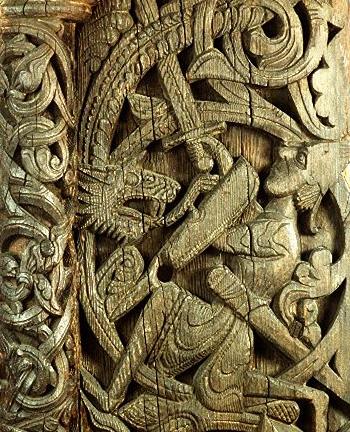
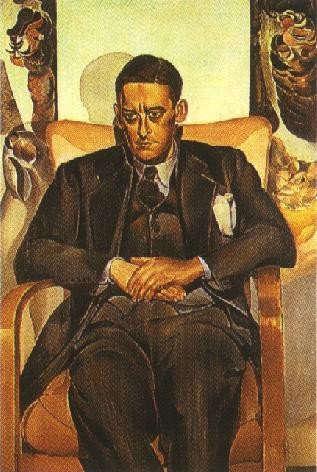
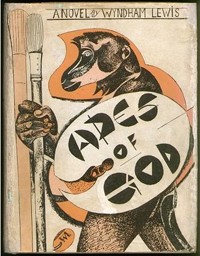 The Apes of God happens to be one of the most devastating satires to be published in the English language since the days of Dryden and Pope. It appeared in a
The Apes of God happens to be one of the most devastating satires to be published in the English language since the days of Dryden and Pope. It appeared in a 
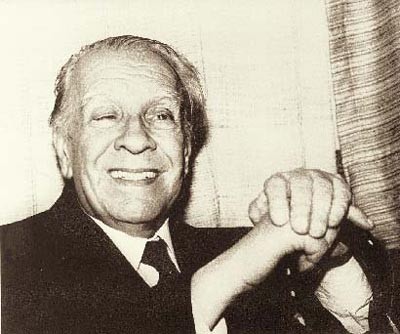
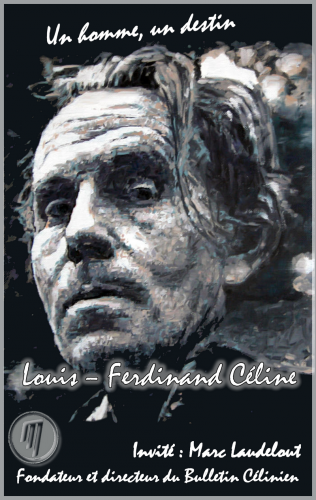




 D’une génération suivant celle de Jules Verne, Louis Boussenard semble en avoir parfaitement assimilé toutes les recettes. Comme son grand aîné, il réussit à nous faire partager la passion des «voyages extraordinaires» sans pourtant jamais arriver au même succès. S’il est un nom qui apparaît souvent dans la
D’une génération suivant celle de Jules Verne, Louis Boussenard semble en avoir parfaitement assimilé toutes les recettes. Comme son grand aîné, il réussit à nous faire partager la passion des «voyages extraordinaires» sans pourtant jamais arriver au même succès. S’il est un nom qui apparaît souvent dans la 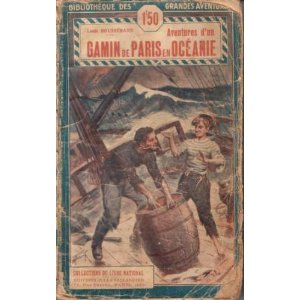




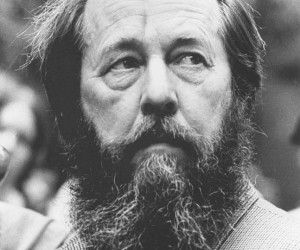 The death of Alexander Solzhenitsyn produced predictable reactions from Western commentators. Yes, they said, he was a moral giant for so bravely exposing the evils of the Soviet penitential system in
The death of Alexander Solzhenitsyn produced predictable reactions from Western commentators. Yes, they said, he was a moral giant for so bravely exposing the evils of the Soviet penitential system in 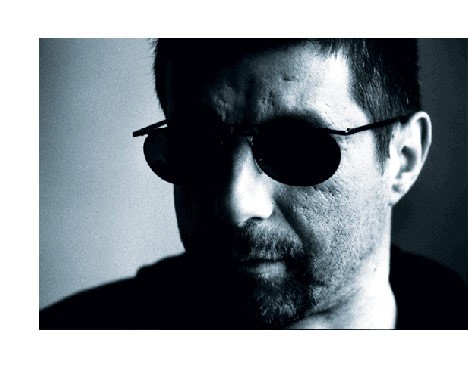
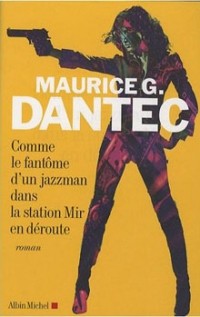 Ses envolées guerrières, ses insultes faciles et ses outrances, cette exaltation que l’âge ne semblait pas devoir tempérer, tout cela s’étalait au fil de milliers de pages, entre deux hommages à Kelly Minogue ou Bertrand Burgalat. Ses T.D.O. sautaient du coq à l’âne, sans queue ni tête, sans début ni fin, bref, ils ressemblaient beaucoup trop à la vie pour qu’on puisse en tirer quelque chose d’aussi simple qu’un résumé.
Ses envolées guerrières, ses insultes faciles et ses outrances, cette exaltation que l’âge ne semblait pas devoir tempérer, tout cela s’étalait au fil de milliers de pages, entre deux hommages à Kelly Minogue ou Bertrand Burgalat. Ses T.D.O. sautaient du coq à l’âne, sans queue ni tête, sans début ni fin, bref, ils ressemblaient beaucoup trop à la vie pour qu’on puisse en tirer quelque chose d’aussi simple qu’un résumé.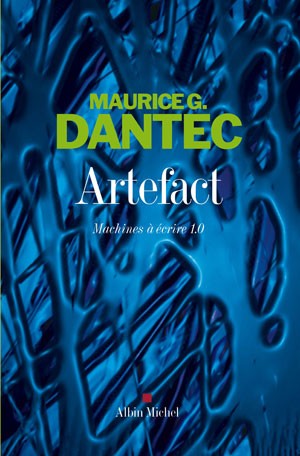 La joie qu’on pouvait sentir chez Maurice Dantec quant à la perspective de la mort prochaine de Saddam Hussein était d’ailleurs obscène. Saddam, qui avait sûrement plus fait pour combattre le fondamentalisme que n’importe qui d’autre. Saddam, qui avait été le seul, après le retrait d’Israël, à envoyer des armes aux chrétiens du Liban à la fin des années quatre-vingt. Saddam, qui avait embauché le chrétien Tareq Aziz comme vice-premier ministre, et donné à un de ses fils un prénom païen de l’ancienne Mésopotamie. Ce Saddam qui, aux yeux de Dantec, ressemblait sûrement trop au méchant idéal dans un film de Chuck Norris. Sa chute fut, hélas, le signal, pour les islamistes, de l’ouverture de la chasse au Chaldéen.
La joie qu’on pouvait sentir chez Maurice Dantec quant à la perspective de la mort prochaine de Saddam Hussein était d’ailleurs obscène. Saddam, qui avait sûrement plus fait pour combattre le fondamentalisme que n’importe qui d’autre. Saddam, qui avait été le seul, après le retrait d’Israël, à envoyer des armes aux chrétiens du Liban à la fin des années quatre-vingt. Saddam, qui avait embauché le chrétien Tareq Aziz comme vice-premier ministre, et donné à un de ses fils un prénom païen de l’ancienne Mésopotamie. Ce Saddam qui, aux yeux de Dantec, ressemblait sûrement trop au méchant idéal dans un film de Chuck Norris. Sa chute fut, hélas, le signal, pour les islamistes, de l’ouverture de la chasse au Chaldéen. Vi sono scelte che non vengono perdonate, che fruttano al proprio autore la «damnatio memoriae» perpetua, indipendentemente dal valore del personaggio e da tutto quanto egli possa aver detto o fatto di notevole, prima di compiere, magari per ragioni contingenti e sostanzialmente in buona fede, quella tale scelta infelice.
Vi sono scelte che non vengono perdonate, che fruttano al proprio autore la «damnatio memoriae» perpetua, indipendentemente dal valore del personaggio e da tutto quanto egli possa aver detto o fatto di notevole, prima di compiere, magari per ragioni contingenti e sostanzialmente in buona fede, quella tale scelta infelice.
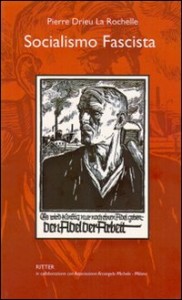
 Nella sua ricerca di un nuovo ordine europeo che consentisse alle «patrie» francese, tedesca, inglese, italiana, di continuare a svolgere un ruolo mondiale nell’era dei colossi imperiali, si era accostato anche a certi ambienti industriali e finanziari che egli definiva «capitalismo intelligente», perché aveva intuito che, in un mondo globalizzato, anche il capitalismo avrebbe potuto svolgere una funzione utile, purché si dissociasse dal nazionalismo e contribuisse a creare migliori condizioni di vita per gli abitanti del Vecchio Continente. Grande utopista, e forse sognatore, Drieu La Rochelle si rendeva però conto della importanza dei fattori materiali della vita moderna, e intendeva inserirli nel quadro della nuova Europa da costruire.
Nella sua ricerca di un nuovo ordine europeo che consentisse alle «patrie» francese, tedesca, inglese, italiana, di continuare a svolgere un ruolo mondiale nell’era dei colossi imperiali, si era accostato anche a certi ambienti industriali e finanziari che egli definiva «capitalismo intelligente», perché aveva intuito che, in un mondo globalizzato, anche il capitalismo avrebbe potuto svolgere una funzione utile, purché si dissociasse dal nazionalismo e contribuisse a creare migliori condizioni di vita per gli abitanti del Vecchio Continente. Grande utopista, e forse sognatore, Drieu La Rochelle si rendeva però conto della importanza dei fattori materiali della vita moderna, e intendeva inserirli nel quadro della nuova Europa da costruire.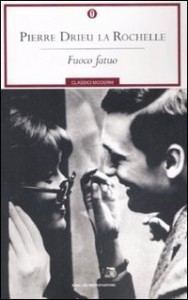
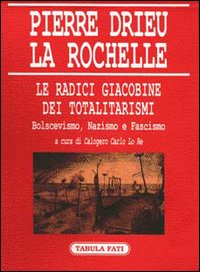
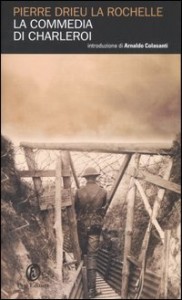


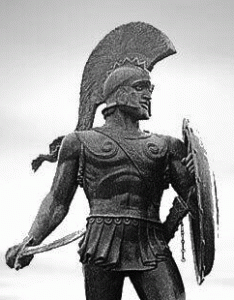 L’educazione non aveva altro scopo che l’esaltazione del coraggio e della energia. I ragazzi vivevano tra loro il più presto possibile, in truppe analoghe a quelle dei balilla dell’Italia fascista o della Hitlerjugend, di cui facevano parte dalla età di sette anni. […]
L’educazione non aveva altro scopo che l’esaltazione del coraggio e della energia. I ragazzi vivevano tra loro il più presto possibile, in truppe analoghe a quelle dei balilla dell’Italia fascista o della Hitlerjugend, di cui facevano parte dalla età di sette anni. […]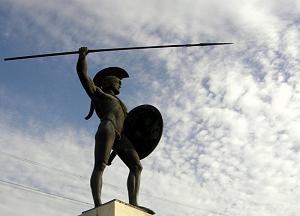 A noi che siamo cresciti nella apparente ovvietà del sistema democratico, sfugge come l’umanità abbia potuto governarsi per millenni senza di esso, pur realizzando opere egregie; e sfugge come il cosiddetto miracolo greco non consista solo nella democrazia ateniese, ma anche nella oligarchia spartana, fondata su un valore che non è quantificabile in termini economici, ma solo e unicamente in termini di onore, dovere e spirito di sacrificio.
A noi che siamo cresciti nella apparente ovvietà del sistema democratico, sfugge come l’umanità abbia potuto governarsi per millenni senza di esso, pur realizzando opere egregie; e sfugge come il cosiddetto miracolo greco non consista solo nella democrazia ateniese, ma anche nella oligarchia spartana, fondata su un valore che non è quantificabile in termini economici, ma solo e unicamente in termini di onore, dovere e spirito di sacrificio.




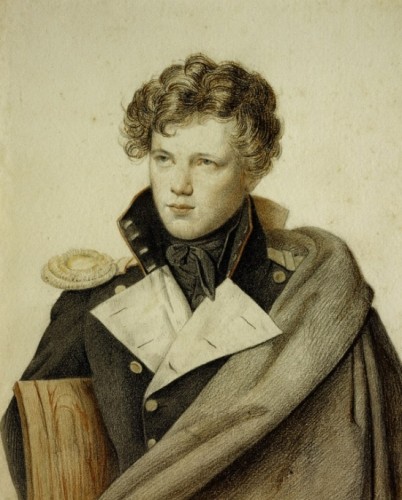
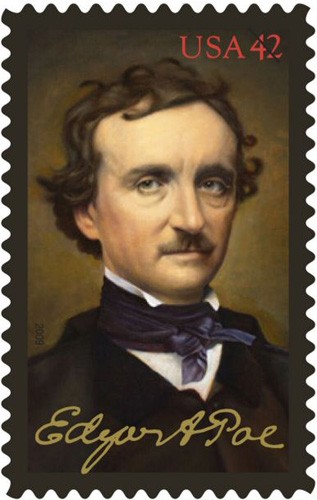 TODAY MARKS the 200th anniversary of the birth of the European-American literary genius and racially concious writer Edgar Allan Poe. I have paid my respects to the eternal memory of Edgar Poe in person at the Poe Museum in Richmond and at his and his beloved Virginia’s grave site in Baltimore, and I offer them again to all who read my words today.
TODAY MARKS the 200th anniversary of the birth of the European-American literary genius and racially concious writer Edgar Allan Poe. I have paid my respects to the eternal memory of Edgar Poe in person at the Poe Museum in Richmond and at his and his beloved Virginia’s grave site in Baltimore, and I offer them again to all who read my words today.